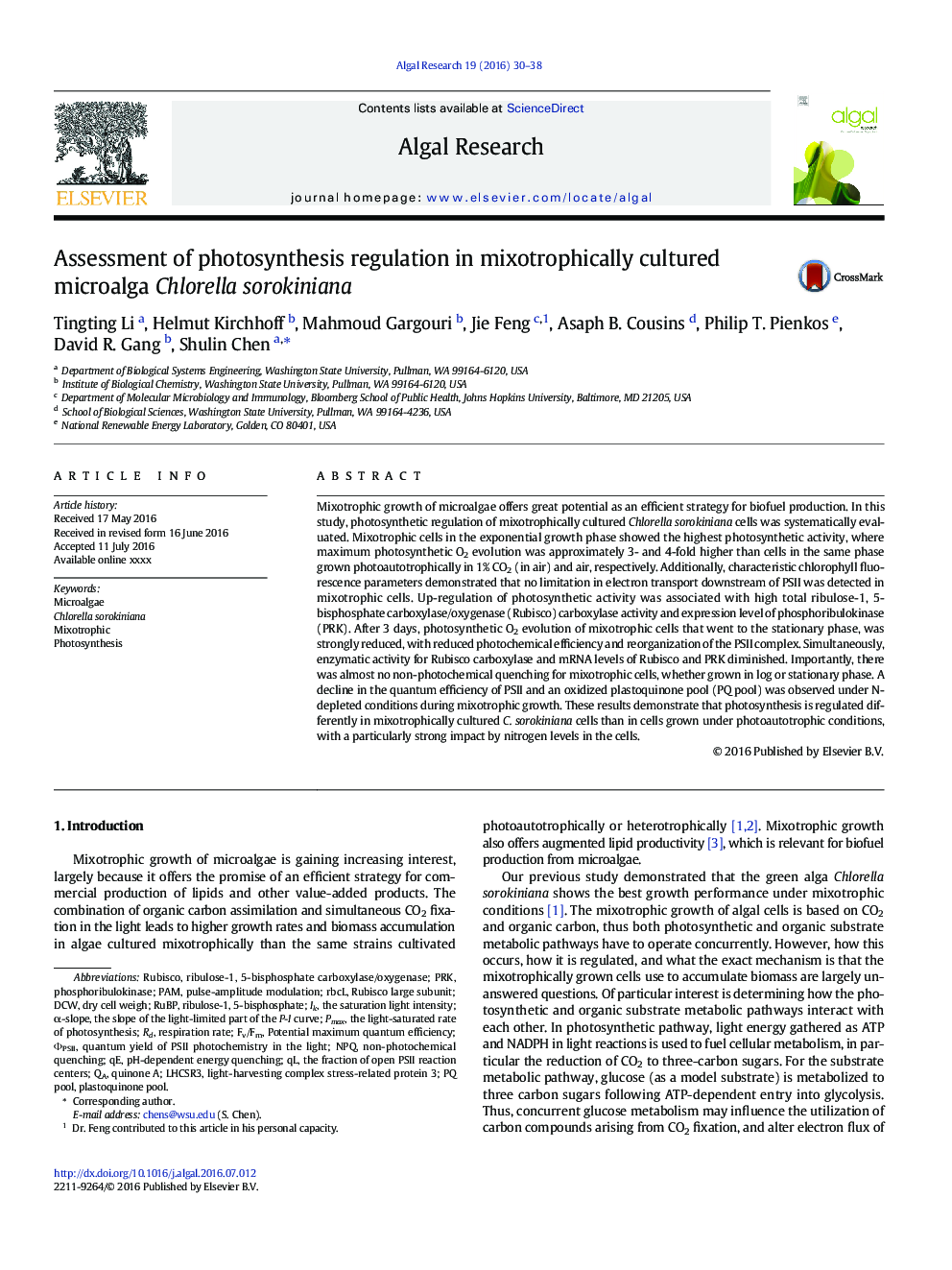| Article ID | Journal | Published Year | Pages | File Type |
|---|---|---|---|---|
| 8086508 | Algal Research | 2016 | 9 Pages |
Abstract
Mixotrophic growth of microalgae offers great potential as an efficient strategy for biofuel production. In this study, photosynthetic regulation of mixotrophically cultured Chlorella sorokiniana cells was systematically evaluated. Mixotrophic cells in the exponential growth phase showed the highest photosynthetic activity, where maximum photosynthetic O2 evolution was approximately 3- and 4-fold higher than cells in the same phase grown photoautotrophically in 1% CO2 (in air) and air, respectively. Additionally, characteristic chlorophyll fluorescence parameters demonstrated that no limitation in electron transport downstream of PSII was detected in mixotrophic cells. Up-regulation of photosynthetic activity was associated with high total ribulose-1, 5-bisphosphate carboxylase/oxygenase (Rubisco) carboxylase activity and expression level of phosphoribulokinase (PRK). After 3Â days, photosynthetic O2 evolution of mixotrophic cells that went to the stationary phase, was strongly reduced, with reduced photochemical efficiency and reorganization of the PSII complex. Simultaneously, enzymatic activity for Rubisco carboxylase and mRNA levels of Rubisco and PRK diminished. Importantly, there was almost no non-photochemical quenching for mixotrophic cells, whether grown in log or stationary phase. A decline in the quantum efficiency of PSII and an oxidized plastoquinone pool (PQ pool) was observed under N-depleted conditions during mixotrophic growth. These results demonstrate that photosynthesis is regulated differently in mixotrophically cultured C. sorokiniana cells than in cells grown under photoautotrophic conditions, with a particularly strong impact by nitrogen levels in the cells.
Keywords
Related Topics
Physical Sciences and Engineering
Energy
Renewable Energy, Sustainability and the Environment
Authors
Tingting Li, Helmut Kirchhoff, Mahmoud Gargouri, Jie Feng, Asaph B. Cousins, Philip T. Pienkos, David R. Gang, Shulin Chen,
